Introduction
Table of Contents
In a world that constantly demands physical and mental resilience, introducing children to martial arts can be a transformative experience. This blog post delves into the most 5 popular martial arts for kids, offering insights into the discipline, fun, and personal growth each art provides.
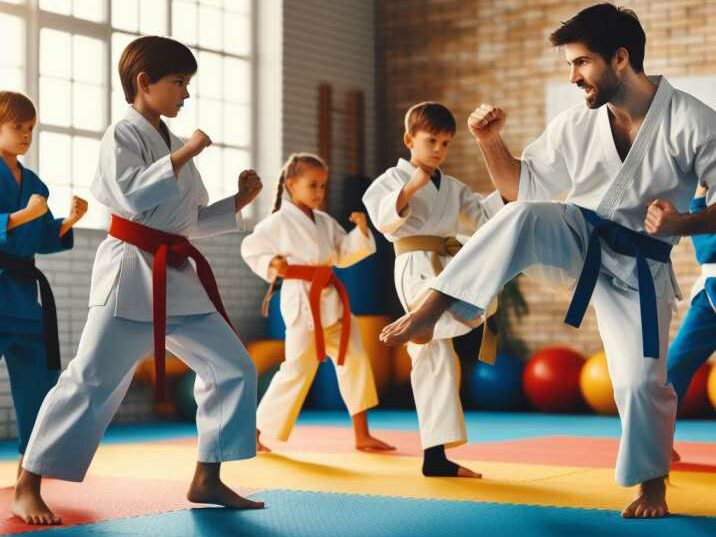
5 Popular Martial Arts for Kids:
Finding the Right Fit
Judo: Mastering the Art of Balance
Judo, meaning “gentle way,” is an excellent choice for kids as it focuses on using an opponent’s force against them. The emphasis on throws and groundwork not only enhances physical fitness but also teaches valuable self-discipline.
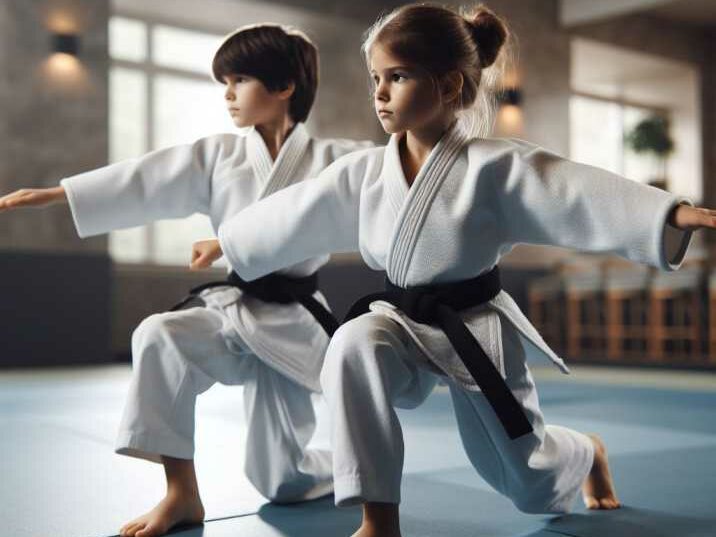
Karate: The Way of the Empty Hand
Karate is renowned for its striking techniques, teaching kids the fundamentals of punches, kicks, and blocks. With a strong emphasis on self-control and respect, karate instills discipline while providing an engaging physical outlet.
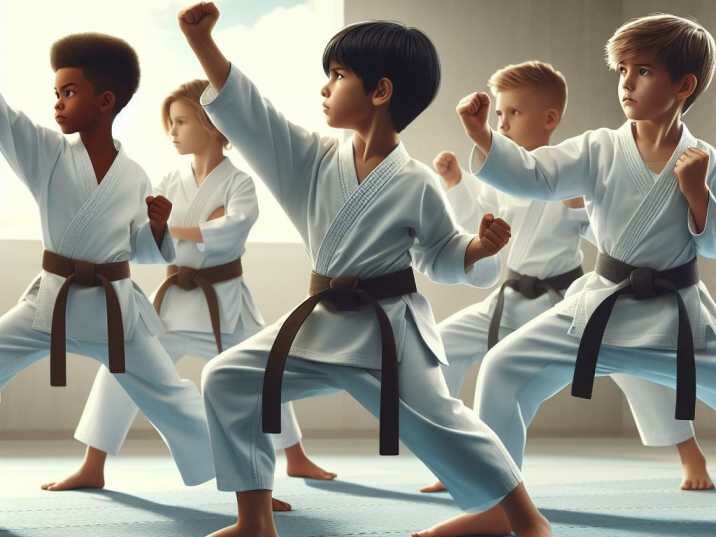
Tae Kwon Do: Kicking Towards Confidence
Tae Kwon Do, originating from Korea, emphasizes high and spinning kicks. This martial art not only boosts physical fitness but also builds confidence and perseverance in young practitioners.
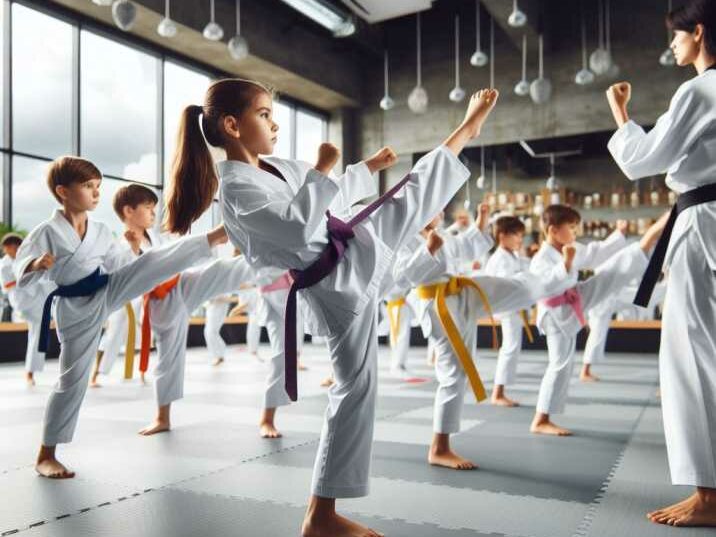
Kung Fu: Embracing the Spirit of the Dragon
With its diverse styles and rich history, Kung Fu introduces kids to a world of fluid movements, acrobatics, and self-defense techniques. Kung Fu encourages discipline through the mastery of intricate forms and routines.
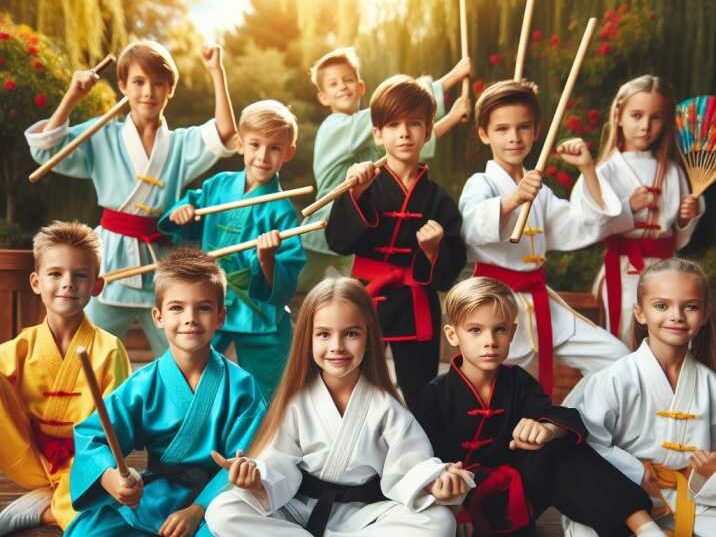
Why Martial Arts for Kids?
Before delving deeper into each martial art, it’s crucial to understand the broader benefits of enrolling your child in a martial arts program.
Martial arts provide a structured environment that fosters discipline, respect, and self-control. These qualities are instilled through a combination of physical training and mental focus.
Beyond the physical aspects, martial arts also promote mental well-being. Children learn to set goals, overcome challenges, and develop a strong sense of self-confidence. The supportive community within martial arts schools further enhances these positive outcomes.
Table of information
| Martial Art | Focus | Key Aspects |
| Judo | Mastering Balance | Throws, Groundwork, Coordination |
| Karate | The Way of Empty hand | Strikes, Blocks, Self-Control, Respect |
| Tae Kwon Do | Kicking Towards Confidence | Kicks, Punches, Blocks, Confidence, Resilience |
| Kung Fu | Embracing the Spirit of the | Fluid Movements, Acrobatics, Self-Defense, Forms |
Choosing the Right Martial Art
5 Popular Martial Arts for Kids and benefits
When deciding which martial art is suitable for your child, consider their interests, temperament, and physical abilities. Each discipline offers unique benefits, and finding the right fit ensures a positive and enriching experience.
Judo: The Gentle Path to Discipline
Judo, developed in Japan, is a martial art centered around throws and groundwork. The focus on using an opponent’s force against them makes it an ideal choice for kids who may be more inclined towards defensive techniques.
Transition Phrase: As we delve into the world of Judo, it’s important to understand the fundamental principles that make this martial art an excellent choice for kids.
Judo Basics for Kids
Judo places a strong emphasis on mastering the art of balance. Children learn to use their body weight efficiently, enhancing their coordination and agility. The controlled throws and grappling techniques not only develop physical strength but also teach the importance of timing and precision.
Karate: The Way of the Empty Hand
Karate, originating from Okinawa, Japan, focuses on striking techniques using punches, kicks, and knee strikes. It is an excellent choice for kids who enjoy a more dynamic and physically engaging martial art.
Karate Essentials for Kids
Karate emphasizes the development of strong, controlled movements. Kids learn a variety of strikes, blocks, and kicks, fostering not only physical fitness but also mental discipline. The structured nature of Karate classes teaches children to follow instructions and respect their instructors and peers.
Tae Kwon Do: Kicking Towards Confidence
Tae Kwon Do, a Korean martial art, is renowned for its dynamic and powerful kicking techniques. It’s an excellent choice for kids who enjoy high-energy activities that promote physical fitness and self-assurance.
Tae Kwon Do Thrills for Kids
Tae Kwon Do training involves a combination of kicks, punches, and blocks, with an emphasis on high and spinning kicks. Kids not only develop flexibility and strength but also gain confidence as they master these impressive techniques. The supportive atmosphere of Tae Kwon Do schools encourages kids to challenge themselves and build resilience.
Kung Fu: Embracing the Spirit of the Dragon
Kung Fu, with its diverse styles and rich history, offers a unique blend of fluid movements, acrobatics, and self-defense techniques. It’s an ideal choice for kids who appreciate the artistic and expressive aspects of martial arts..
Kung Fu Wonders for Kids
Kung Fu introduces kids to a world of expressive movements and intricate forms. Through a combination of punches, kicks, and acrobatics, children not only enhance their physical abilities but also cultivate creativity and focus. The discipline of mastering Kung Fu forms instills a sense of achievement and self-mastery.
Conclusion:
Nurturing Discipline and Confidence through Martial Arts for Kids
In the journey of parenting, the quest for activities that holistically contribute to a child’s physical, mental, and emotional development is never-ending. Martial arts emerge as a beacon in this quest, offering a perfect blend of discipline, fun, and personal growth for kids.
From the gentle throws of Judo to the dynamic kicks of Tae Kwon Do, each martial art brings a unique set of benefits to the table. The structured environment of these disciplines not only fosters physical fitness but also imparts invaluable life skills such as respect, self-discipline, and confidence.
As parents, the decision to enroll a child in martial arts is an investment in their future. The benefits extend beyond the physical realm, influencing character development and mental well-being. The supportive communities within martial arts schools serve as nurturing environments, fostering a sense of belonging and camaraderie among young practitioners.
It’s crucial to approach the decision with consideration for your child’s individuality. Understanding their interests, temperament, and physical abilities will guide you in selecting the martial art that aligns with their preferences and encourages a lifelong love for movement and self-improvement.
In the grand tapestry of childhood experiences, martial arts create a vibrant thread, weaving together discipline, joy, and personal growth. So, embark on this journey with your child, explore the diverse world of martial arts, and witness the transformative power they hold in shaping young minds and bodies. Through the practice of Judo, Karate, Tae Kwon Do, or Kung Fu, your child not only learns self-defense but also discovers the inner strength that will guide them through the challenges of life.
Frequently Asked Questions (FAQs)
- Q: At what age can children start learning martial arts?
- A: Many martial arts schools accept children as young as 4 or 5 years old. However, the ideal age can vary depending on the child’s maturity and interest. It’s best to consult with instructors to determine readiness.
- Q: How do I choose the right martial art for my child?
- A: Consider your child’s personality, interests, and physical abilities. If they enjoy throws and groundwork, Judo might be a good fit. For dynamic striking techniques, Karate could be suitable. Tae Kwon Do is great for those who love high kicks, while Kung Fu offers a blend of expressive movements.
- Q: Are martial arts classes safe for kids?
- A: Yes, martial arts classes are generally safe for kids when conducted by qualified instructors in a controlled environment. Instructors focus on teaching techniques safely, and safety gear is often used during training.
- Q: Will my child become aggressive after learning martial arts?
- A: No, martial arts emphasize discipline, respect, and self-control. Children are taught that the skills they acquire are for self-defense and should not be used to harm others. The focus is on building character and confidence.
- Q: How often should my child attend martial arts classes?
- A: The frequency of classes can vary, but most martial arts schools recommend at least two to three sessions per week. Consistent practice helps children develop skills, discipline, and physical fitness.
- Q: Can children with special needs participate in martial arts?
- A: Yes, many martial arts schools offer inclusive programs for children with special needs. Instructors can adapt teaching methods to accommodate different abilities, fostering a supportive environment.
- Q: What equipment will my child need for martial arts classes?
- A: The required equipment varies depending on the martial art. Generally, comfortable athletic wear and bare feet are suitable for beginners. As your child progresses, they may need a uniform (gi) and protective gear.
- Q: How do martial arts help with self-discipline?
- A: Martial arts instill self-discipline by teaching children to follow instructions, adhere to a structured training routine, and respect their instructors and peers. These skills extend beyond the martial arts studio into daily life.
- Q: Can my child compete in martial arts tournaments?
- A: Many martial arts disciplines offer opportunities for competition, but participation is usually optional. Competing can enhance a child’s confidence and showcase their skills, but it’s essential to choose competitions that align with your child’s comfort level.
- Q: How can parents support their child’s martial arts journey?
- A: Encourage regular attendance, provide positive reinforcement, and show interest in your child’s progress. Attend events and demonstrations to celebrate their achievements, and communicate with instructors to stay informed about their development in class.
- Q: What skills do kids learn in Judo? A: Judo develops physical skills such as balance and coordination, along with mental attributes like focus and the ability to adapt to changing situations.
- Q: Is Judo suitable for children with no prior martial arts experience? A: Absolutely. Judo is beginner-friendly and accommodates children with various skill levels. Instructors tailor training to suit the individual needs of each child.
- How does Brazilian Jiu-Jitsu benefit children socially? A: BJJ fosters teamwork and camaraderie as kids often practice techniques together. It promotes problem-solving and communication skills.
- Is Brazilian Jiu-Jitsu safe for children’s joints and bones? A: Yes, BJJ is designed to be safe for children, emphasizing controlled movements and techniques that reduce the risk of injury.
- What are the benefits of Taekwondo for kids? A: Taekwondo benefits kids by enhancing flexibility, balance, coordination, and fostering self-confidence through the achievement of belt ranks.
- At what age can kids begin learning Taekwondo? A: Taekwondo is suitable for children as young as 3 or 4 years old. Classes are tailored to accommodate different age groups and skill levels.
- Is Taekwondo only about kicks and punches? A: While kicks and punches are central to Taekwondo, it also includes forms, sparring, and self-defense techniques, providing a well-rounded martial arts experience.
- What age is suitable for kids to start learning Karate? A: Karate can be introduced to kids as young as 4 or 5 years old. However, it’s essential to consider the child’s maturity and ability to follow instructions.
- Is Karate safe for children? A: Yes, Karate is generally safe for kids when taught by qualified instructors. They emphasize control, discipline, and safety during training.
- How does Karate promote discipline in children? A: Karate instills discipline by teaching kids to respect their instructors, follow a structured training routine, and adhere to the principles of the martial art.

